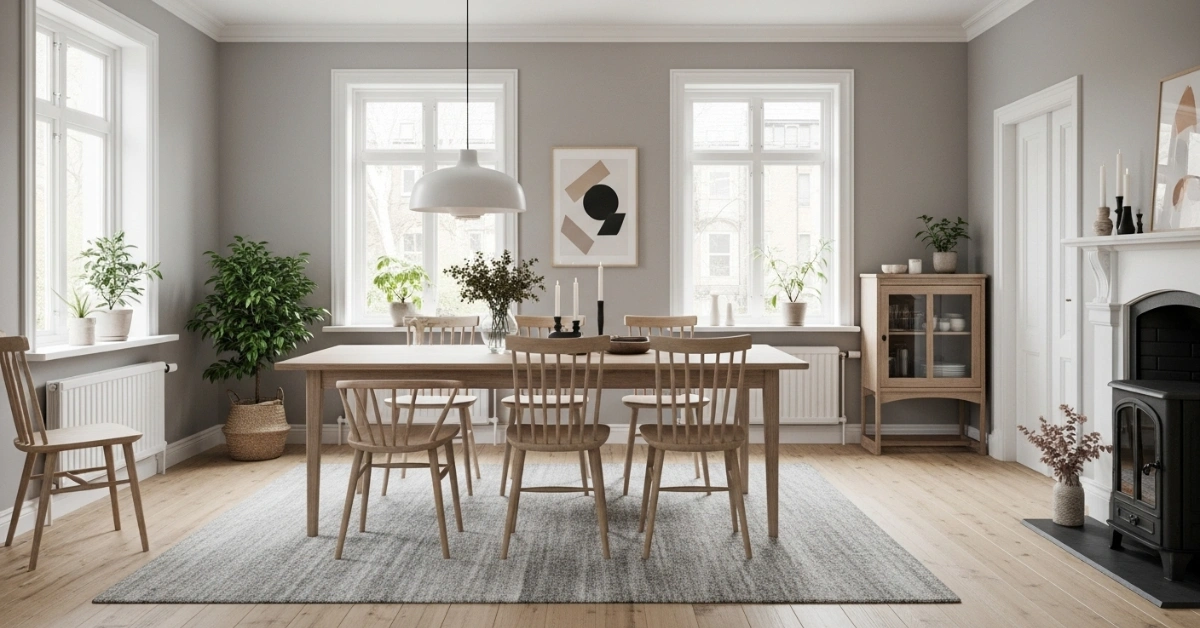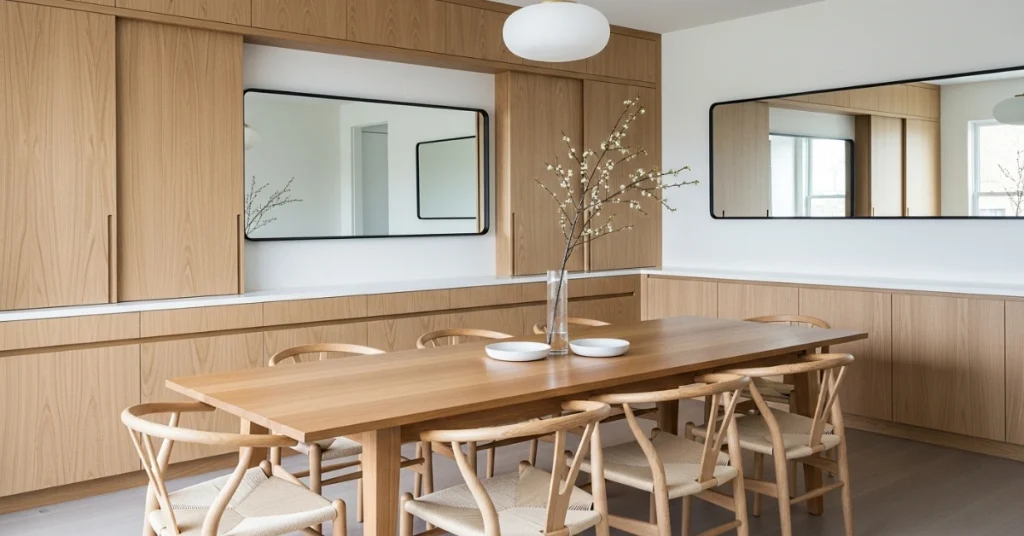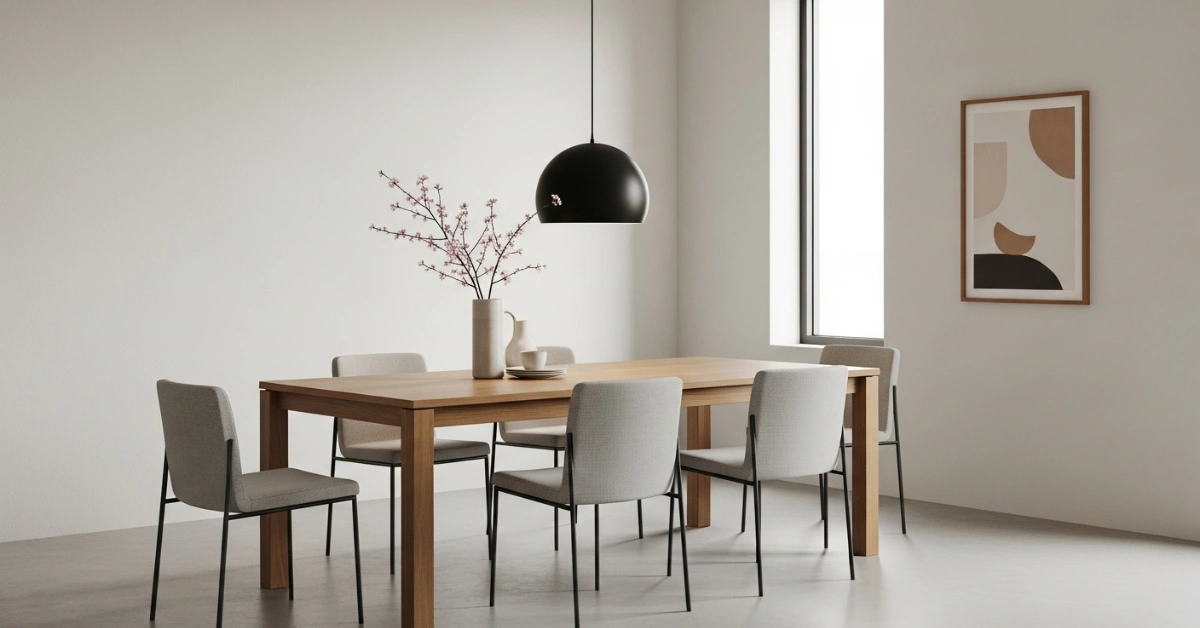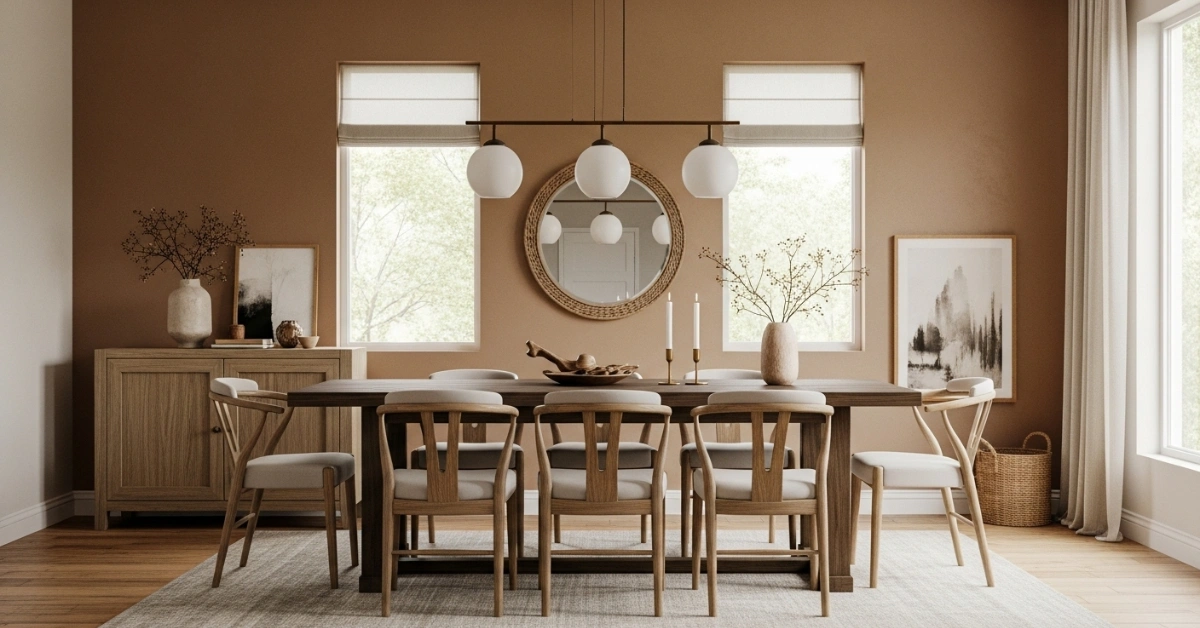15 perfect Japandi Dining Room Designs Ideas To Set The Scene

Creating a dining room that feels both inviting and uncluttered can be a challenge. Many homeowners struggle with spaces that feel either too sterile or overly chaotic, lacking balance or personality. A Japandi dining room offers the perfect solution, blending Japanese minimalism with Scandinavian coziness to craft a serene, functional, and aesthetically pleasing space. In this guide, we’ll explore the essence of Japandi design, share practical tips, and provide inspiring ideas to help you transform your dining room into a harmonious retreat that’s both timeless and welcoming.

What is Japandi Design?
Japandi is a hybrid interior design style that marries the clean, minimalist aesthetic of Japanese design with the warm, functional elements of Scandinavian decor. This fusion creates spaces that are uncluttered yet cozy, sleek yet soulful. According to a 2023 article by Architectural Digest, Japandi has surged in popularity for its ability to balance form and function, making it ideal for modern homes (Architectural Digest, 2023).

Key Characteristics of Japandi Design
- Minimalism: Emphasis on simplicity, with only essential elements included.
- Natural Materials: Wood, bamboo, linen, and stone dominate for organic texture.
- Neutral Color Palettes: Soft whites, beiges, grays, and muted earth tones.
- Functionality: Every piece serves a purpose, avoiding unnecessary clutter.
- Wabi-Sabi Influence: Embracing imperfections, such as handcrafted ceramics or weathered wood.
“Japandi is about finding beauty in simplicity while creating a space that feels lived-in and loved.” Sarah Tanaka, Interior Designer
Why Choose a Japandi Dining Room?
A dining room is more than just a place to eat, it’s a space for connection, celebration, and daily rituals. Japandi design elevates this experience by fostering calm and intentionality. Here’s why it’s a perfect fit:
- Promotes Serenity: The minimalist approach reduces visual noise, creating a peaceful dining environment.
- Timeless Appeal: Neutral tones and natural materials ensure the space remains stylish for years.
- Versatility: Japandi works in both small apartments and spacious homes.
- Sustainability: The focus on quality, durable materials aligns with eco-conscious living.

For example, in my friend’s small urban apartment, a Japandi-inspired dining nook with a wooden table and linen cushions transformed a cramped corner into a cozy, inviting space for gatherings.
Designing Your Japandi Dining Room: Key Elements
To create a Japandi dining room, focus on these core components. Each element contributes to the overall harmony and functionality of the space.
1. Color Palette: Neutral and Soothing
Japandi dining rooms rely on a muted, earthy color scheme. Think soft whites, warm beiges, taupe, charcoal, and subtle greens. These tones create a calming backdrop while allowing natural materials to shine.
- Tip: Use a single accent color sparingly, like a sage green vase or navy blue napkins, to add depth without overwhelming the space.
- Example: A dining room with white walls, a wooden table, and gray linen chairs feels airy yet grounded.

2. Furniture: Simple and Functional
Choose furniture with clean lines and understated elegance. A wooden dining table with tapered legs or a low-profile bench embodies Japandi’s minimalist ethos.
- Materials: Opt for oak, walnut, or bamboo for warmth and durability.
- Shapes: Avoid ornate details; prioritize sleek, geometric forms.
- Example: A rectangular wooden table paired with cushioned chairs in neutral upholstery creates a balanced look.

“Invest in one statement piece, like a handcrafted table, and keep the rest simple to let it shine.” Hiroshi Kato, Furniture Designer
3. Textures: Layering for Warmth
While Japandi is minimalist, it avoids feeling cold by incorporating tactile textures. Combine smooth wood with soft linens, woven rugs, or ceramic tableware.
- Tip: Use handcrafted elements, like a ceramic serving bowl with organic imperfections, to add character.
- Example: A wool runner under a wooden table adds softness without cluttering the space.

4. Lighting: Soft and Natural
Lighting in a Japandi dining room should mimic natural light to enhance the serene vibe. Pendant lights with paper or bamboo shades or simple ceramic fixtures work beautifully.
- Tip: Use dimmable lights to create a cozy ambiance for evening meals.
- Example: A low-hanging paper lantern above the dining table casts a warm, diffused glow.

5. Decor: Less is More
Japandi decor is intentional and sparse. Choose a few meaningful pieces, like a single piece of wall art or a sculptural vase, to avoid clutter.
- Tip: Incorporate plants, such as a bonsai or fiddle-leaf fig, to bring nature indoors.
- Example: A single black-and-white ink painting on the wall adds elegance without overwhelming the space.

Japandi Dining Room Ideas: Practical Inspirations
Here are 15 actionable ideas to bring the Japandi aesthetic to your dining room, catering to various spaces and budgets.
1. Low Wooden Dining Table
Inspired by Japanese design, a low table encourages intimate dining. Pair it with floor cushions for a cozy setup.
- How to Implement: Choose a low oak table and add linen cushions in beige or gray.
- Budget Tip: Repurpose a coffee table as a dining surface for small spaces.

2. Neutral Upholstered Chairs
Swap heavy chairs for sleek ones with neutral fabric upholstery. This adds comfort while maintaining simplicity.
- Example: Gray linen chairs with wooden frames complement a walnut table.

3. Woven Pendant Light
A woven bamboo or rattan pendant light adds texture and warmth. Hang it low for an intimate feel.
- Tip: Ensure the shade diffuses light softly to avoid harsh shadows.

4. Minimalist Tableware
Choose ceramic or stoneware plates and bowls with organic shapes and muted colors. Avoid overly decorative patterns.
- Example: Matte black ceramic plates paired with wooden chopsticks create a sleek look.

5. Natural Fiber Runner
A linen or jute table runner adds texture without overwhelming the table. Opt for neutral tones like cream or taupe.
- Tip: Keep the runner narrow to maintain a clean aesthetic.

6. Statement Wall Art
A single piece of art, like a Japanese ink drawing or Scandinavian print, can serve as a focal point.
- Example: A framed sumi-e painting above the table adds elegance.

7. Greenery as Decor
Incorporate a single plant or a small arrangement of branches to bring nature into the space.
- Tip: Use a ceramic pot in a muted color to tie in with the palette.

8. Sliding Shoji Screens
For open-plan homes, shoji screens can define the dining area while maintaining an airy feel.
- Example: A white shoji screen with a wooden frame adds privacy without closing off the space.

9. Wooden Bench Seating
Replace traditional chairs with a wooden bench for a communal, minimalist vibe.
- Tip: Add cushions for comfort and to soften the look.

10. Open Shelving
Display a curated selection of tableware on open wooden shelves. Keep it sparse to avoid clutter.
- Example: A few ceramic bowls and a teapot on a walnut shelf add functionality and style.

11. Textured Wall Finish
A subtle textured wall, like limewash or plaster, adds depth without overpowering the space.
- Tip: Stick to neutral tones like soft white or beige.

12. Floor-to-Ceiling Curtains
Light, sheer curtains in linen or cotton allow natural light while softening the space.
- Example: Floor-length beige curtains frame a large window beautifully.

13. Handcrafted Centerpiece
A single handcrafted item, like a ceramic vase or wooden bowl, can anchor the table.
- Tip: Fill it with seasonal branches or leave it empty for simplicity.

14. Tatami-Inspired Rug
A woven rug inspired by tatami mats adds texture and ties the room to Japanese roots.
- Example: A jute rug under the table grounds the space.

15. Built-In Storage
Incorporate built-in wooden cabinets to keep clutter out of sight while maintaining a clean aesthetic.
- Tip: Choose cabinets with sliding doors for a Japanese touch.

Common Mistakes to Avoid in a Japandi Dining Room
Even with the best intentions, it’s easy to stray from the Japandi aesthetic. Here are pitfalls to avoid:
- Overloading with Decor: Too many accessories disrupt the minimalist vibe. Stick to a few meaningful pieces.
- Ignoring Proportions: Oversized furniture can overwhelm a small space. Scale pieces to fit the room.
- Using Harsh Lighting: Bright, cold lights clash with Japandi’s warmth. Opt for soft, warm tones.
- Mixing Too Many Colors: Stick to a cohesive neutral palette to maintain harmony.
- Neglecting Texture: A lack of tactile elements can make the space feel flat. Layer materials thoughtfully.
Japandi Dining Room on a Budget
Creating a Japandi dining room doesn’t require a large budget. Here are cost-effective tips:
| Element | Budget-Friendly Idea | Estimated Cost |
|---|---|---|
| Dining Table | Refinish a secondhand wooden table | $50–$150 |
| Chairs | Use thrifted chairs with new neutral cushions | $20–$50 per chair |
| Lighting | DIY a paper lantern or buy affordable woven pendants | $30–$100 |
| Decor | Use thrifted ceramics or natural branches | $10–$50 |
| Textiles | Sew a linen table runner from affordable fabric | $15–$40 |
For example, I helped a friend revamp their dining room by sourcing a $75 wooden table from a local thrift store and refinishing it with a natural stain. Paired with secondhand chairs and a DIY jute runner, the space felt authentically Japandi for under $200.
Maintaining Your Japandi Dining Room
To keep your dining room looking fresh and timeless, follow these maintenance tips:
- Clean Regularly: Dust wooden surfaces and vacuum textiles to maintain their natural beauty.
- Rotate Decor: Swap out small decor items, like vases or tableware, seasonally to keep the space dynamic.
- Protect Materials: Use coasters and placemats to preserve wooden surfaces.
- Refresh Textiles: Wash or replace linens periodically to keep them looking crisp.

Conclusion: Create Your Dream Japandi Dining Room
A Japandi dining room combines the best of Japanese and Scandinavian design to create a space that’s both serene and inviting. By focusing on minimalism, natural materials, and thoughtful details, you can craft a dining area that feels timeless and functional. Whether you’re starting from scratch or refreshing an existing space, the ideas and tips in this guide will help you achieve a Japandi dining room that inspires connection and calm.
Ready to transform your dining room? Start by choosing one Japandi element like a wooden table or neutral linens and build from there. Share your Japandi dining room journey in the comments or explore our curated collection of Japandi-inspired decor for more inspiration!






